Top 10 Foods Highest in Fiber

Dietary fiber, also known as "roughage," is an essential nutrient required for proper digestion of foods, good gut health, and helping you feel full. (1)
Health benefits of fiber include reduced blood pressure, lower cholesterol, and a decreased risk for stroke, diabetes, and various gastrointestinal diseases. (1)
High fiber foods include beans, lentils, avocados, chia seeds, acorn squash, green peas, collard greens, broccoli, oranges, and sweet potato. The current daily value (DV) for dietary fiber is 28 grams. (2)
Below is a list of high fiber foods, for more, see the extended lists of fiber rich foods, vegetables high in fiber, fruits high in fiber, beans high in fiber, and grains high in fiber.
-
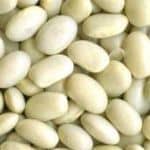 1. Navy (Haricot) Beans
1. Navy (Haricot) Beans
Fiber
per CupFiber
per 100gFiber
per 200 Calories19g
(68% DV)11g
(38% DV)15g
(54% DV)More Beans and Legumes High in Fiber
- 19g (66% DV) in 1 cup of white beans
- 16g (56% DV) in 1 cup of lentils
- 17g (60% DV) in 1 cup of adzuki beans
- 15g (55% DV) in 1 cup of pinto beans
- 12g (45% DV) in 1 cup of chickpeas
- 9g (33% DV) in 1 cup of lima beans
See the full list of beans high in fiber.
-
2. Avocados
Fiber
per AvocadoFiber
per 100gFiber
per 200 Calories13g
(48% DV)7g
(24% DV)8g
(30% DV)See the list of fruits high in fiber.
-
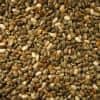 3. Chia Seeds
3. Chia Seeds
Fiber
per oz (~2 Tblsp)Fiber
per 100gFiber
per 200 Calories10g
(35% DV)34g
(123% DV)14g
(51% DV)Other Nuts and Seeds High in Fiber
- 8g (28% DV) per oz of flaxseeds
- 5g (19% DV) per oz of pumpkin and squash seeds
- 4g (14% DV) per oz of sesame seeds
- 4g (13% DV) per oz of almonds
- 3g (11% DV) per oz of pistachios
- 3g (10% DV) per oz of pecans
- 2g (9% DV) per oz of sunflower seeds
See the ranking for nuts and seeds high in fiber.
-
 4. Acorn Squash
4. Acorn Squash
Fiber
per Cup CookedFiber
per 100gFiber
per 200 Calories9g
(32% DV)4g
(16% DV)16g
(56% DV)Other Squash High in Fiber
- 10g (36% DV) in 1 cup of hubbard squash (cooked)
- 7g (23% DV) in 1 cup of butternut squash (cooked)
- 6g (21% DV) in 1 cup of an average winter squash (cooked)
See the list of all vegetables high in fiber.
-
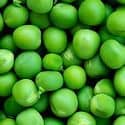 5. Green Peas
5. Green Peas
Fiber
per Cup CookedFiber
per 100gFiber
per 200 Calories9g
(31% DV)6g
(20% DV)13g
(47% DV)- 18% DV fiber in 1 cup of podded peas
See the list of all vegetables high in fiber.
-
 6. Collard Greens
6. Collard Greens
Fiber
per Cup CookedFiber
per 100gFiber
per 200 Calories8g
(27% DV)4g
(14% DV)24g
(87% DV)Other Green Leafy Vegetables High in Fiber
- 5g (18% DV) in 1 cup of cooked turnip greens
- 4.3g (15% DV) in 1 cup of cooked spinach
- 4.2g (15% DV) in 1 cup of cooked escarole
- 3.7g (13% DV) in 1 cup of Swiss chard
See the list of all vegetables high in fiber.
-
 7. Broccoli
7. Broccoli
Fiber
per Cup CookedFiber
per 100gFiber
per 200 Calories5g
(18% DV)3g
(12% DV)19g
(67% DV)See the list of all vegetables high in fiber.
-
 8. Whole Wheat Pasta
8. Whole Wheat Pasta
Fiber
per CupFiber
per 100gFiber
per 200 Calories5g
(16% DV)4g
(14% DV)5g
(19% DV)Other Whole Grains High in Fiber
- 8g (29% DV) per cup of bulgur
- 7g (26% DV) per cup of kamut
- 4g (14% DV) in a 2 slices of whole wheat bread
- 4g (13% DV) per cup of brown rice
See the list of grains high in fiber.
-
 9. Oranges
9. Oranges
Fiber
per CupFiber
per 100gFiber
per 200 Calories4g
(15% DV)2g
(9% DV)10g
(36% DV)See the list of fruits high in fiber.
-
 10. Sweet Potatoes
10. Sweet Potatoes
Fiber
per CupFiber
per 100gFiber
per 200 Calories4g
(14% DV)3g
(11% DV)7g
(25% DV)See the list of all vegetables high in fiber.
Printable One Page Sheet
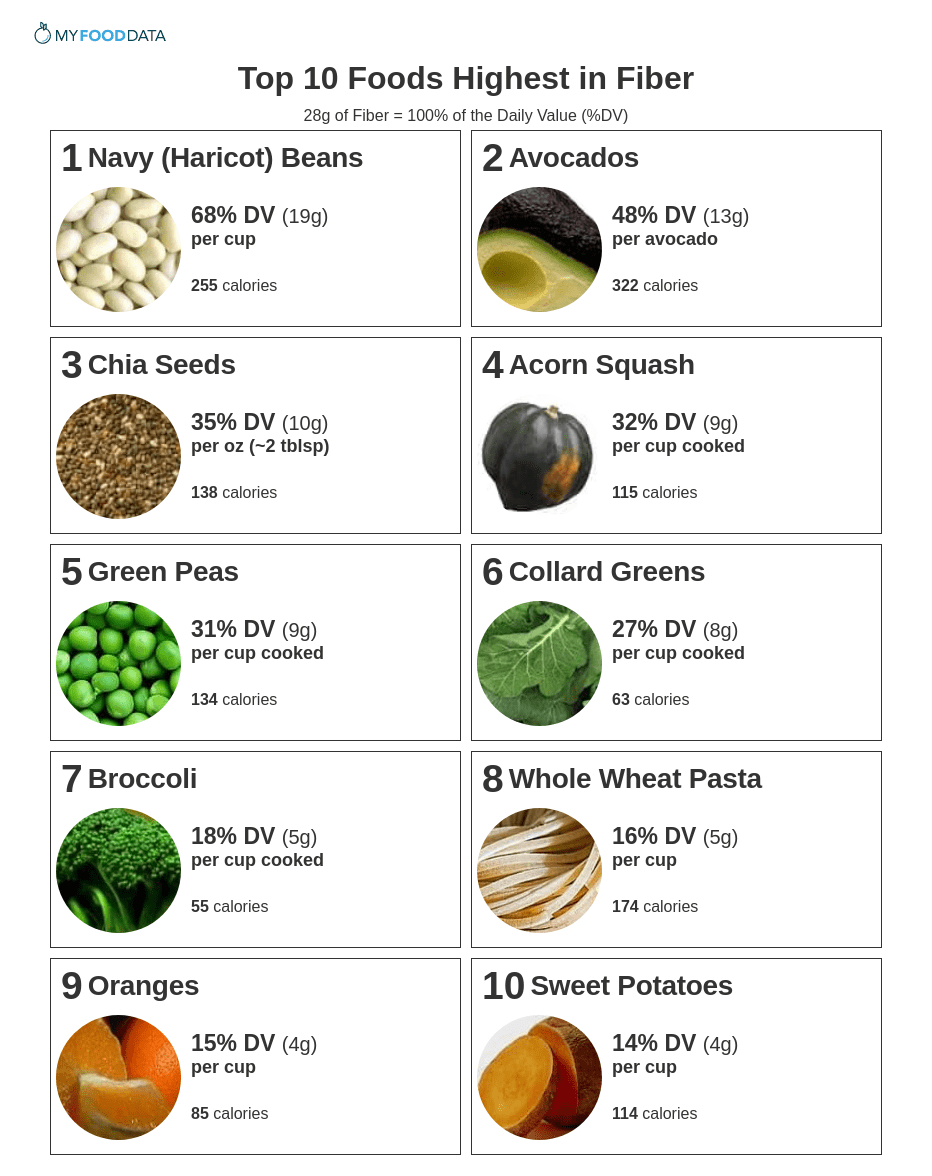
Extended List of Fiber Rich Foods
| Food | Serving | Fiber |
|---|---|---|
| 1. Mamey Apple | per fruit | 91% DV (25g) |
| 2. Passion-Fruit (Granadilla) | per cup | 88% DV (25g) |
| 3. Sapodilla | per fruit | 46% DV (13g) |
| 4. Mamey Sapote | 1 cup chopped | 34% DV (9g) |
| 5. Natto (Fermented Soybeans) | per cup | 34% DV (9g) |
| 6. Durian | per cup chopped | 33% DV (9g) |
| 7. Guavas | per cup | 32% DV (9g) |
| 8. Bulgur (Cracked Wheat) | per cup | 29% DV (8g) |
| 9. Edamame (Green Soybeans) | per cup | 29% DV (8g) |
| 10. Taro Root | per cup | 24% DV (7g) |
| 11. Persimmon | per fruit | 22% DV (6g) |
| 12. Dried Coconut | per oz | 17% DV (5g) |
| 13. Bran | per tablespoon | 6% DV (2g) |
How much fiber do you need each day?
The daily value (DV) for fiber is 28 grams per day. (2) This is the amount shown on food labels to help the average person compare the health benefits of different foods. However, for many people, this amount is actually too low.
The adequate intake (AI) is a more accurate daily target, and varies by age and gender. The AI for fiber is up to 38 grams per day. (3) We've included the specific values below for various groups below, so you can determine what your personal target should be.
The average American consumes far less than the DV for fiber, let alone the AI for their demographic group. (4)
Here is the breakout of the adequate intake by age and gender for fiber: (3)
| Life Stage | RDA |
|---|---|
| Children | |
| 1-3 years old | 19g |
| 4-8 years old | 25g |
| Males | |
| 9-13 years old | 31g |
| 14-50 years old | 38g |
| 50+ years old | 30g |
| Females | |
| 9-18 years old | 26g |
| 19-50 years old | 25g |
| 50+ years old | 21g |
| Pregnancy | |
| 14-50 years old | 29g |
| Lactation | |
| 14-50 years old | 29g |
About the Data
Data for the curated food lists comes from the USDA Food Data Central Repository.
You can check our data against the USDA by clicking the (Source) link at the bottom of each food listing.
Note: When checking data please be sure the serving sizes are the same. In the rare case you find any difference, please contact us and we will fix it right away.
About Nutrient Targets
Setting targets can provide a guide to healthy eating.
Some of the most popular targets include:- Daily Value (%DV) - The daily value (%DV) is a general guideline for consumption that will prevent deficiency of a particular nutrient in most people. The %DV refers to the percentage of an amount that\'s found in a single serving of a food. It also accounts for absorption factors. It is set by the U.S. FDA.
- Recommended Dietary Allowance (%RDA) - The RDA sets an average daily dietary intake level that is sufficient to meet the nutrient requirements of nearly all (97.5%) healthy individuals. It\'s more specific than the daily value, and varies by age and gender. The RDA is set by the US National Institutes of Health.
- Reference Dietary Intake (%RDI) -The reference dietary intake is similar to the recommended daily allowance, but is specific to age and gender. The RDI for amino acids is set by the U.N. World Health Organization.
- Adequate Intake (%AI) - This value is primarily used in reference to omega-3 and omega-6 fats. The Adequate Intake is set by the U.S. Institute of Medicine. Because there is less evidence to determine the ideal targets for consumption of these nutrients, the specific amount is considered to be less reliable. Using the term Adequate Intake, rather than one of the other terms, helps to emphasize that the ideal intake of that particular nutrient has not yet been scientifically determined.
See the Guide to Recommended Daily Intakes for more information.
Want to set your own targets? Sign up for an account and set custom targets in the daily food log.From the Nutrient Ranking Tool
Use the ranking tool links below to select foods and create your own food list to share or print.
- Foods High in Fiber
- Foods Low in Fiber
- Vegetables High in Fiber
- Fruits High in Fiber
- Vegetarian Foods High in Fiber
- Nuts High in Fiber
- Grains High in Fiber
- Beans High in Fiber
- Breakfast Cereals High in Fiber
- Fast Foods High in Fiber
View more nutrients with the nutrient ranking tool, or see ratios with the nutrient ratio tool.
Related
Data Sources and References
- Health benefits of dietary fiber.
- U.S. Agricultural Research Service Food Data Central
- FDA on Daily Values
- Institute of Medicine Dietary Reference Intakes
- Institute of Medicine Dietary Reference Intakes Details
- Thomas M. Barber, Stefan Kabisch, Andreas F. H. Pfeiffer and Martin O. Weickert The Health Benefits of Dietary Fibre Nutrients. 2020 Oct; 12(10): 3209.
- FDA on Daily Values
- Institute of Medicine Dietary Reference Intakes
- Diane Quagliani, MBA, RDN, LDN and Patricia Felt-Gunderson, MS, RDN, LDN Closing America’s Fiber Intake Gap Am J Lifestyle Med. 2017 Jan-Feb; 11(1): 80–85. Published online 2016 Jul 7. doi: 10.1177/1559827615588079
Try the recipe nutrition calculator, or daily meal planner.
Create a free account to log and track foods.


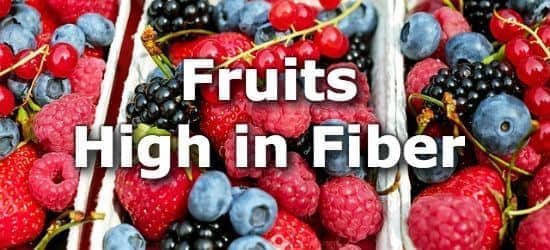 Next ➞
Next ➞